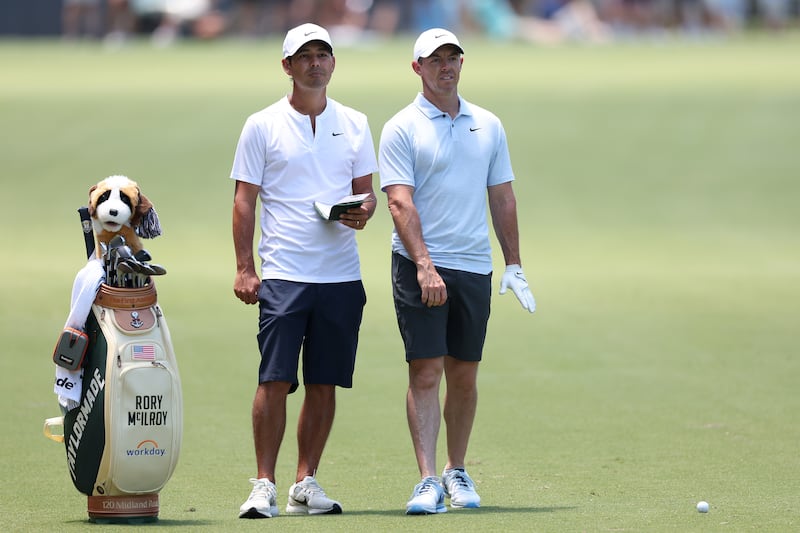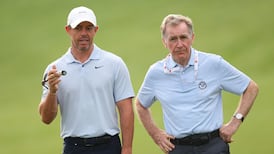The black Nike hoodie seemed incongruous given the 29 degrees heat splitting the stones outside. That is until Rory McIlroy explained he’d only just arrived. The days of being one of the first to pencil his signature into the register have been replaced by the sort of late arrival reserved for those who have been around the block a few times.
For McIlroy this 124th US Open – his 16th of a career that has yielded four Majors, so far – is the latest opportunity to end a barren spell that has stretched to a decade. He doesn’t need to be reminded, aware more than anyone of where that winless streak in the Majors has left him (in chasing down Seve Ballestero on five and Nick Faldo on six) and also in forming his own legacy.
“I’ve always said I still feel like being the most successful European in the game is within my reach. I’ve got obviously Seve and Nick Faldo to pass there in terms of Major wins. I’m really proud of my body of work over the past 15 years and everything that I have achieved, whether it be season-long titles or individual tournaments or Majors. Obviously getting my hands on a fifth Major has taken quite a while, but I’m more confident than ever that I’m right there, that I’m as close as I’ve ever been,” said McIlroy, before heading out to play a practice round with Tom McKibbin.
“I want to win as many golf tournaments as I can. I want to try to compete and win as many Majors as I can. I think the only thing about trying to pick a number is that you’re setting yourself up for failure or disappointment. Tiger [Woods] wanted to surpass Jack [Nicklaus]. It looks like he mightn’t get there, but are we going to call Tiger’s career a failure? Absolutely not. It’s arguably the best. He’s played the best golf anyone’s ever seen.
READ MORE
“There’s always going to be that tinge of what could have been. I don’t want to do that to myself. If someone would have told me at 20 years old I’d be sitting here at 35 and this is the career I’ve had I would not have believed them and I would have been ecstatic.

“I still have a good bit of time here, hopefully for the next 10 years. I still like to think I’ve got a good run ahead of me. Whatever those numbers are, whatever the totals add up to, I’ll accept that, and feel like I’ve done pretty well for a little boy from Northern Ireland that dreamed of playing golf for a living one day.”
McIlroy, with Scottie Scheffler and Xander Schauffele for the first two rounds, the 1-2-3 in the world rankings that has become a favoured marquee group of the USGA, won his only US Open in 2011 at Congressional on a wet course with receptive greens that, if anything, was the antithesis of the challenge awaited at Pinehurst No. 2, where fast fairways getting faster and firm greens getting firmer will be the order of the days.
If McIlroy is to crack the code it will – as he knows – require a different mindset and strategy. His short game and putting rather than power off the tee will be needed. McIlroy, indeed, has a streak of five straight top-10s in the US Open (9-8-7-5-2) heading into this latest examination, a rebound from three missed cuts between 2016-18. “I sort of had a bit of a, I guess, come-to-Jesus moment after that, tried to really figure out why that was,” McIlroy said of his improved results since 2019.
So, what was it he learned? And what‘s it going to take this time?
“I would say embracing the difficult conditions, embracing the style of golf needed to contend at a US Open, embracing patience. Honestly, embracing what I would have called ‘boring’ back in the day. Explosiveness isn’t going to win a US Open. It’s more methodically building your score over the course of four days and being okay with that,” says McIlroy.
He knows the template. It’s about the delivery, as ever.
- Sign up for push alerts and have the best news, analysis and comment delivered directly to your phone
- Join The Irish Times on WhatsApp and stay up to date
- Listen to our Inside Politics podcast for the best political chat and analysis
















